Medium Big-Bore .375s
Power and versatility make the .375 a top choice.
other By: Brian Pearce | January, 26
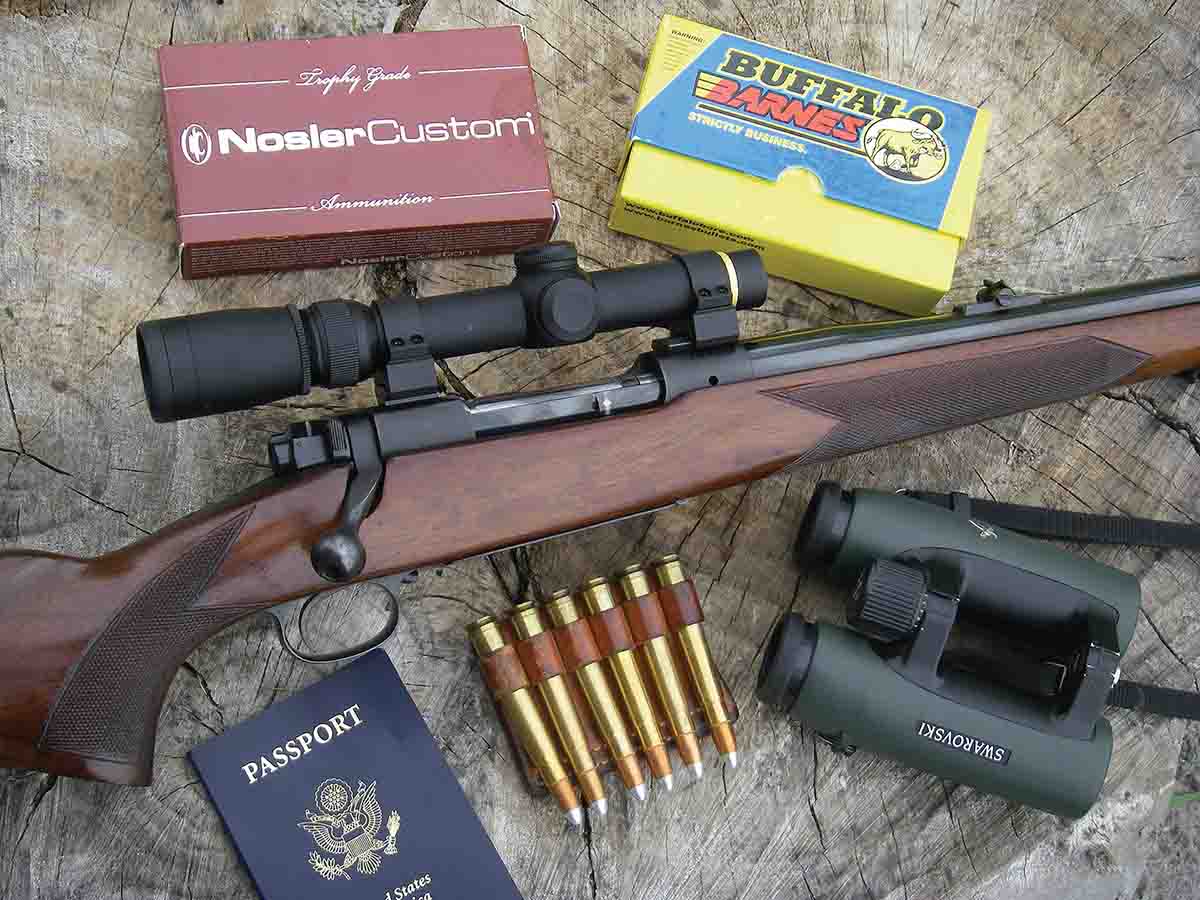
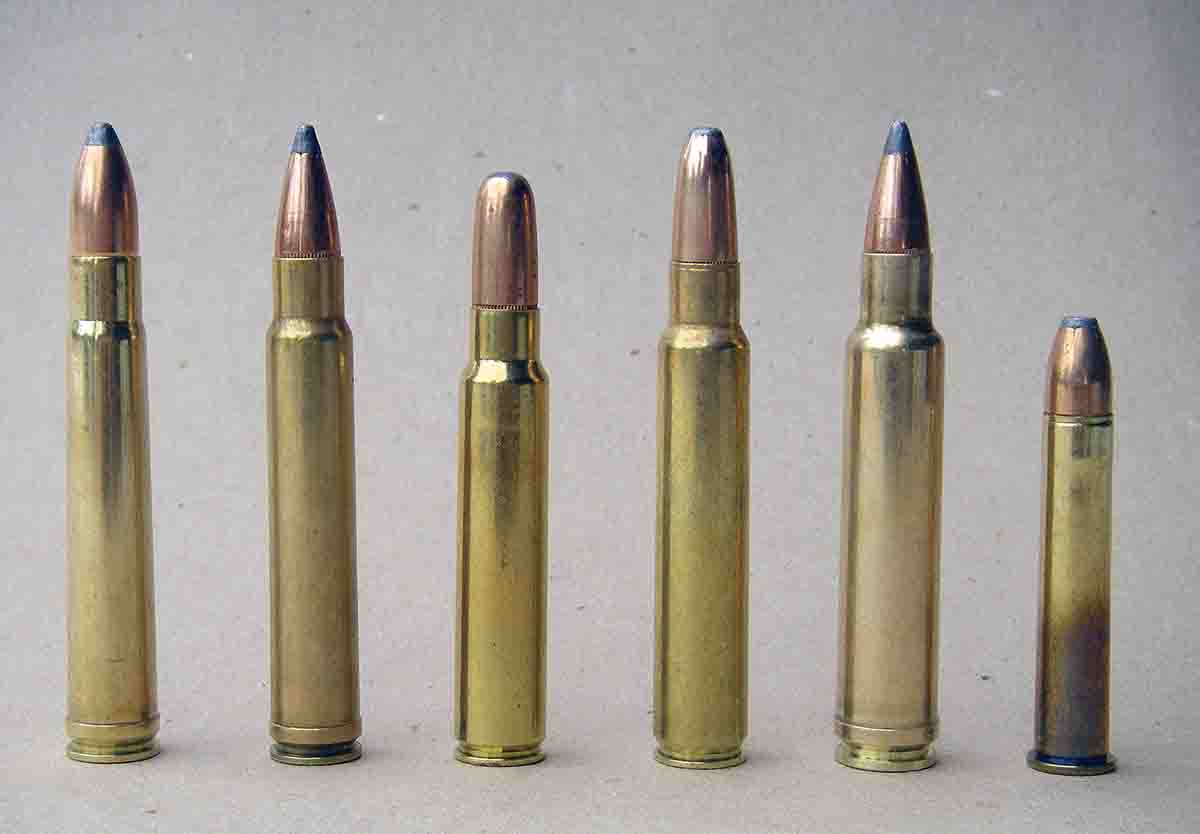
After reaching the brushy island, we moved carefully to not spook the bear, when it appeared, running full tilt toward the river bank directly in front of us but suddenly stopped, apparently to see what was invading his territory. The shot at around 100 yards was good, and while not necessary, two more bullets were fired into him. He retreated into the alders, and we quickly made our way upstream. Handfuls of berries and large sections of bone and tissue were scattered more than 30 feet behind where he stood. A heavy blood trail led into thick alders, where he expired less than 25 yards away. The cartridge chosen for the hunt was the .375 H&H Magnum handloaded with then newly designed Barnes 270-grain Triple-Shock bullets.
The .375 H&H Magnum was introduced in 1912 by the British firm Holland & Holland as a versatile medium-bore cartridge, but American hunters generally consider it a big bore. Period British cordite loads included 235-, 270- and 300-grain bullets pushed 2,800, 2,650 and 2,500 fps, respectively, although some sources list velocities slightly lower. Western Cartridge began offering ammunition in 1925, but velocities were increased to 2,690 and 2,530 fps for 270- and 300-grain bullets, respectively.
Beginning around 1935/36, Winchester began offering its Model 70 rifle that positioned the .375 H&H Magnum to become popular worldwide. Previously the cartridge was primarily available in fine British double rifles, single shots and magazine rifles, but these were difficult to obtain, with limited quantities produced, and they were comparatively costly. The Model 70 was a no-frills rifle with a robust and reliable design and was priced within the reach of most hunters. Alaskan moose and brown bear guides and hunters found favor with it. In Africa it became a widely popular “working” rifle and cartridge among professional hunters and still enjoys widespread use.
With an overall cartridge length of 3.60 inches, the .375 H&H requires a long action, not to be confused with .30-06 length actions that house cartridges of 3.340 inches. The case was gracefully tapered and featured a minimal shoulder that was inadequate to maintain proper headspace. As a remedy, a belt was placed around the cartridge head just forward of the extractor groove. Although this was not the first belted case, it was one of the earliest and certainly the version that first came into widespread use. Around 1920 the .375 was necked down (with other small dimensional changes) to create the .300 H&H Magnum. In the years since, it has been the parent case for countless wildcat cartridges and dozens of commercial offerings, including many of Weatherby’s cartridges from .270 through .375; the .264, .300, .338 and .458 Winchester Magnums; the 6.5, 7mm, 8mm, .350 and .416 Remington Magnums; and many others.
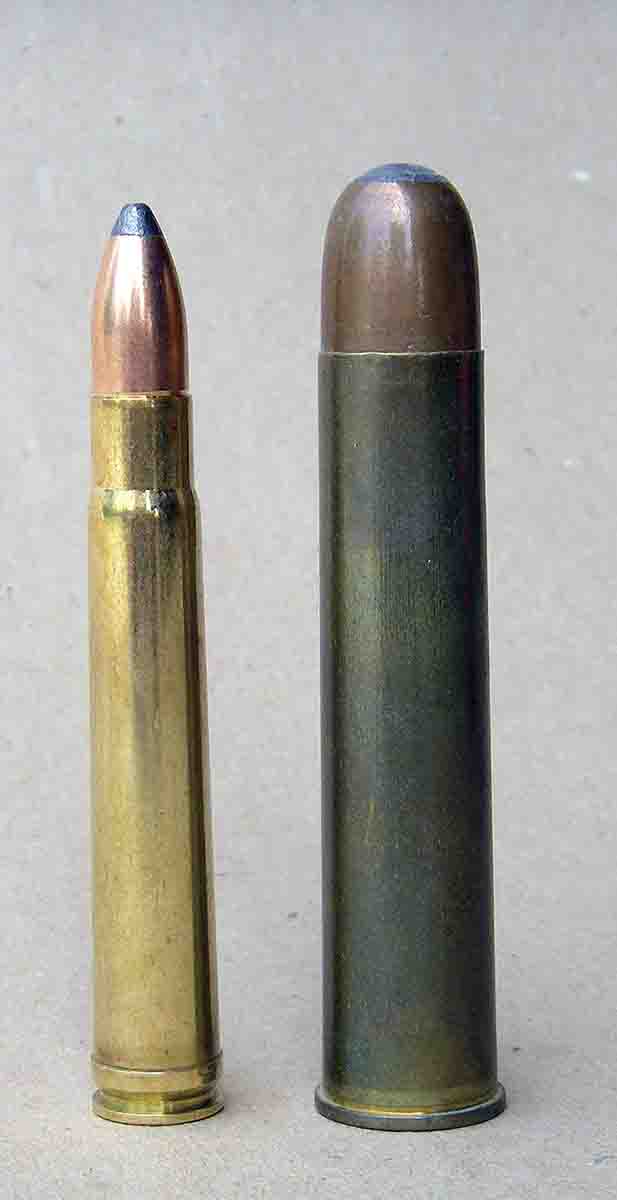
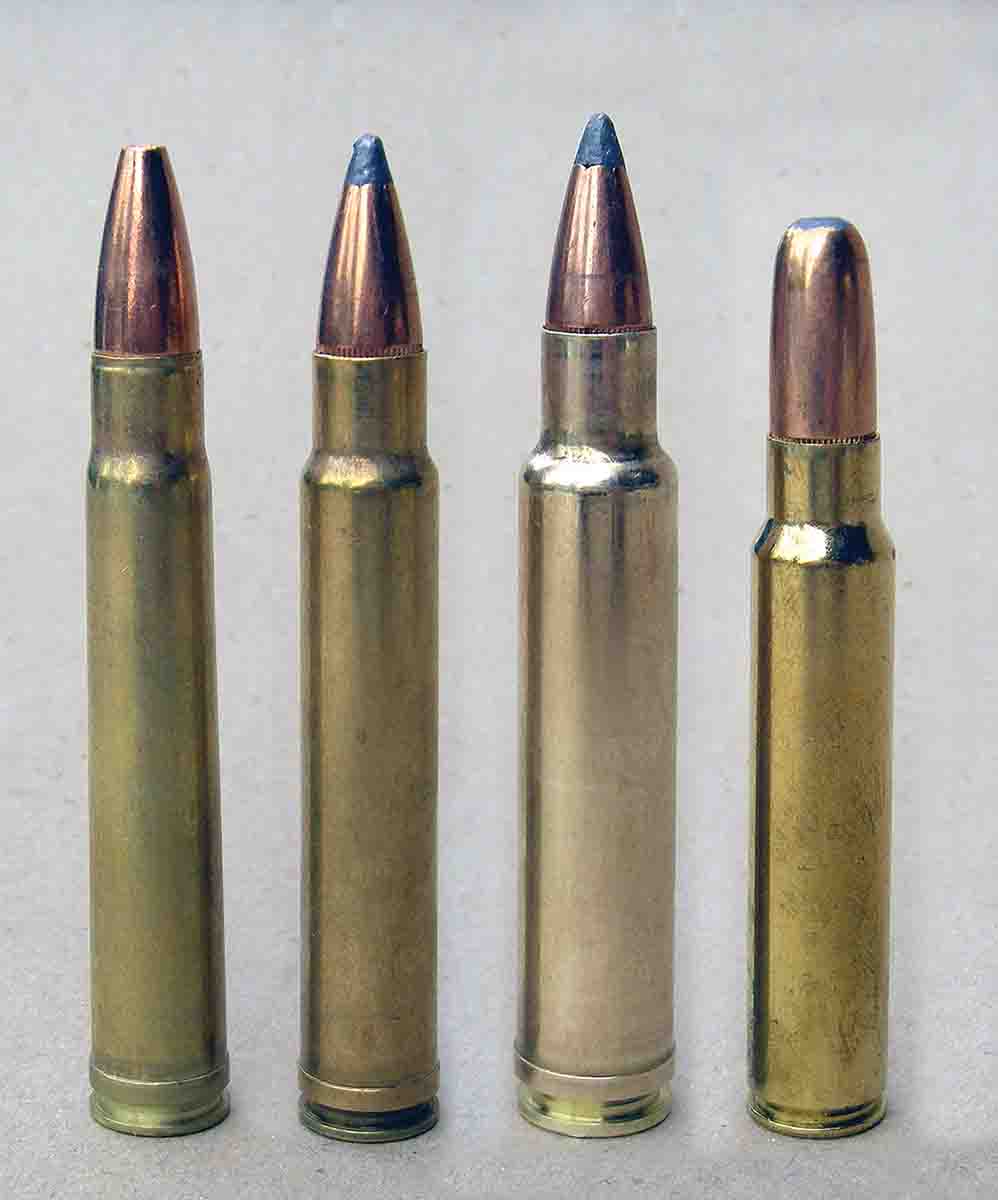
One of the virtues of the .375 is its ability to deliver a heavy blow to game while offering manageable recoil. As most PHs and guides will tell you, accuracy is paramount. If a client is shooting a gun that he is afraid of, and it causes him to flinch, missed shots or poor bullet placement is the result. This is disappointing for the hunter, creates more work for the guide and is not how we respect the game animals we admire and enjoy hunting. The .375’s recoil is certainly more stout than typical deer hunting cartridges, but it is not sharp when fired from suitable bolt-action rifles that typically weigh between 9 to 11 pounds, with and without a scope. The .375 H&H recoil is more of a healthy push with notably more muzzle rise. While most shooters will only “enjoy” a few shots per shooting session, seasoned big-bore riflemen can shoot several boxes of ammunition in a single session without developing a flinch.
There have been several other .375 cartridges developed, including wildcat and commercial, in an effort to improve in some way on the original H&H version. Some have been credible, but the original .375 H&H is the most commonly encountered and is the standard by which others are compared. A traveling hunter will probably be able to find ammunition should his supply become lost or depleted.
While hunting bullets are not the focus of this article, it should be mentioned that .375 H&H performance is better today than at any time in the cartridge’s history due to today’s large selection of premium bullets (available as a component or in factory loads) that are designed to accomplish a variety of tasks. Some feature a high ballistic coefficient for long-range work, while others offer controlled expansion and deep penetration on heavy game. There are also some excellent solids engineered to provide arrow-straight and deep penetration. Bullet choices are broad for the .375 H&H.
There have been several “improved” .375 H&H Magnum cartridges, such as the .375 JRS Magnum (based on the 8mm Remington Magnum necked up) and .375 Ackley Improved, but the most popular version is the .375 Weatherby Magnum (WM) developed around 1944 or 1945 by Roy Weatherby as simply a “blown out” version that increased powder capacity and velocity. Factory loads push a 270-grain bullet 2,940 fps or a 300-grain bullet at 2,800 fps. Incidentally, .375 H&H Magnum ammunition can be fired in a rifle chambered for the .375 WM.
The added velocity and flatter trajectory offered by the .375 WM can be an advantage when hunting in open country where shots are long. For example, when stoked with Hornady 270-grain Spire Points, it offers a flatter trajectory over 500 yards than the .30-06 loaded with 165-grain Spire Points. Its downrange power and authority cannot be ignored – nor is it free. In this instance the primary “cost” is a notable increase in recoil. Nonetheless, if recoil is not objectionable, it is an excellent cartridge, especially when hunting heavy game in open country. In spite of the development of the even higher velocity .378 WM, Weatherby still offers rifles and ammunition for the .375.
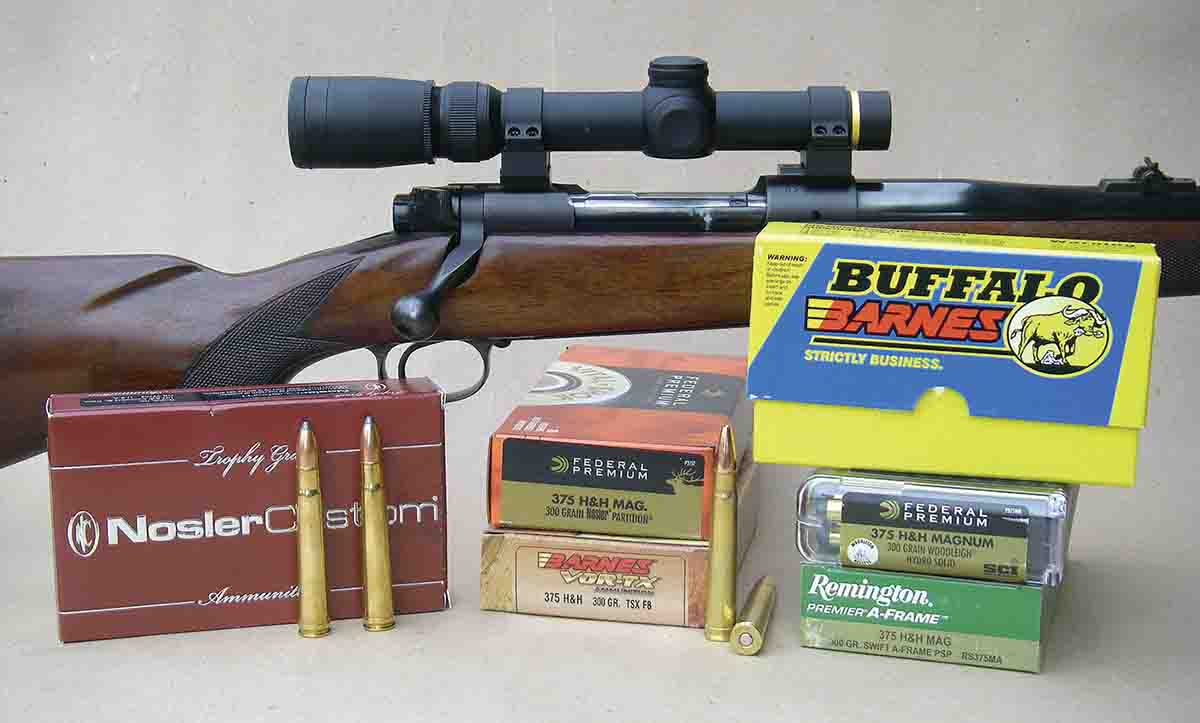
There may not be a practical need for greater velocity than is delivered by the .375 WM (or cartridges with similar performance), but Roy Weatherby developed the .378 Weatherby Magnum in 1953. The large case was new with strong similarities to the .416 Rigby case but with a belt added, and it featured the same double-radius shoulder found on other Weatherby cartridges. It is advertised to push 270-grain bullets 3,180 fps or a 300 grainer at 2,925 fps, and it remains the most powerful of regular production .375s. This performance requires a large-ring, magnum-length action (for cartridges of 3.655 inches), reduced magazine capacity, increased ammunition cost and recoil. For those willing to pay those prices, the .378 Weatherby Magnum delivers impressive performance.
Beginning in 1999 Remington introduced the .300 Remington Ultra Mag (RUM) on a new beltless case that was similar to the .404 Jeffery case (but not dimensionally exact). Remington quickly necked that case up and down and created a series of new cartridges, with the .375 RUM appearing in 2002. With an overall cartridge length of 3.600 inches, it is designed to function in .375 H&H length actions but offers notably greater powder capacity and increased velocity. Advertised factory loads push a 270-grain bullet at 2,900 fps or a 300-grain bullet at 2,760 fps. This modern .375 is no longer listed by Remington, but ammunition is available.
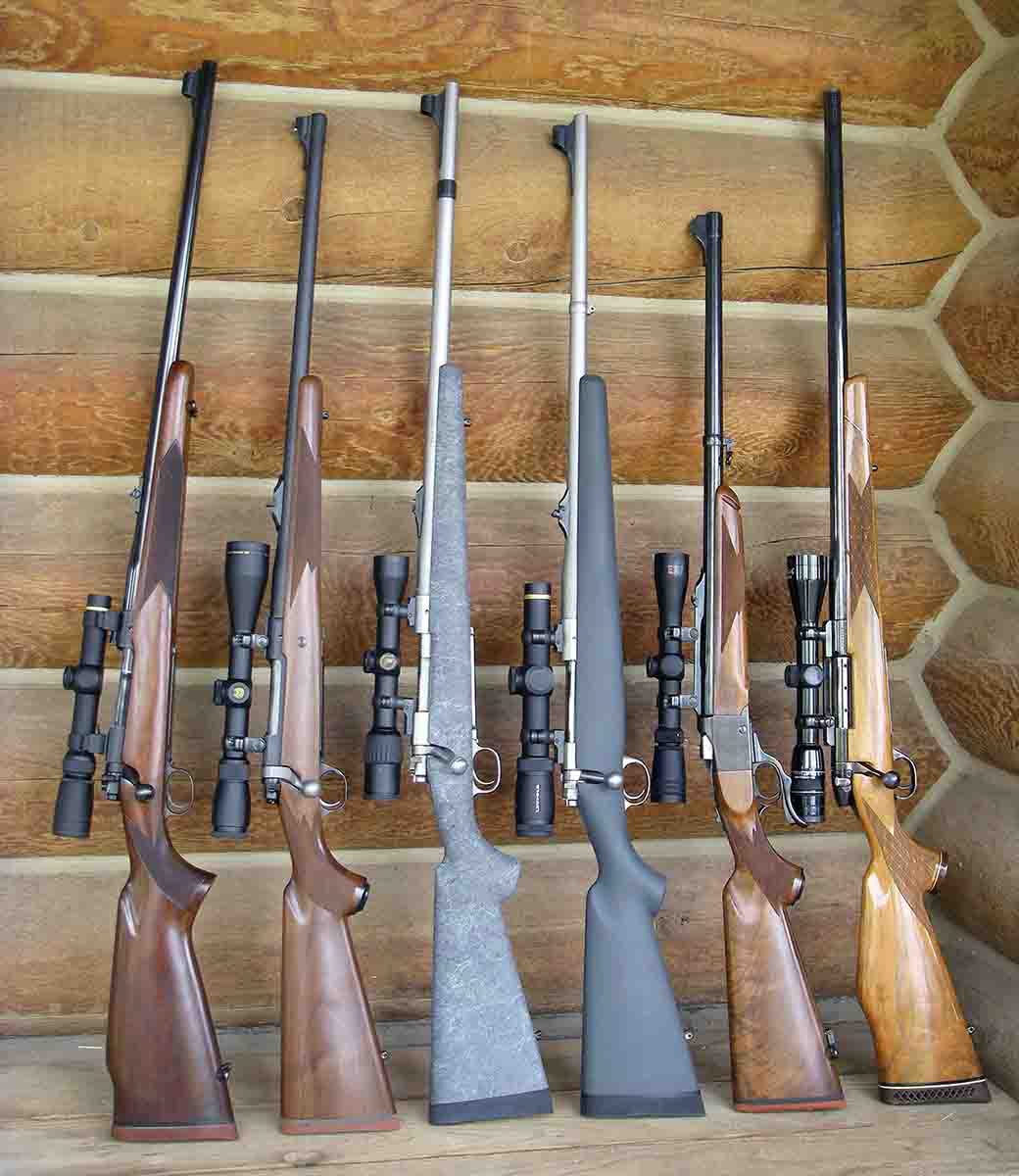
The .375 Ruger was the result of a joint effort between Ruger and Hornady and first appeared in late 2006. All the above .375s feature an overall cartridge length of 3.600 inches or longer, while the .375 Ruger has an overall cartridge length of 3.340 inches and can be housed in a .30-06 length action. The beltless case is new (although similar to the Newton case) and has a head diameter of .532 inch, the same as the belt on the .375 H&H case, which results in an increased case diameter and more powder capacity. The shoulder angle is 30 degrees. In spite of being a comparatively short cartridge, the .375 Ruger is advertised to push a 270-grain bullet 2,840 fps, or a 300 grainer 2,660 fps. In testing early factory loads in a Ruger Model 77 Hawkeye with a 23-inch barrel, velocities were 2,859 and 2,745 fps, respectively. Extreme spreads were remarkably low, and 100-yard groups often measured under an inch.
The .375 Ruger easily outperforms the .375 H&H but in a short action. With Ruger Model 77 Hawkeye rifles fitted with 20- (Alaskan) and 23-inch (African) barrels, rifle weight is around 7¾ pounds, a combination that has quickly become popular among big-game hunters and guides around the world. I find the .375 Ruger the most interesting of all improved or modern .375s.
The .376 Steyr was developed as a joint effort between Hornady and Austrian-based rifle manufacturer Steyr and was first announced in 2000. It was intended specifically for the Steyr Super Scout rifle and delivered notably greater big-game punch than the .308 Winchester, for which the Scout rifle was originally designed, but it falls short of .375 H&H ballistics. It has an overall cartridge length of 3.110 inches and can be housed in select .308-length actions but not all. It is advertised to push a 270-grain bullet 2,600 fps, which is nonetheless formidable power.
The .375 Winchester was introduced in 1978, along with a strengthened Big Bore version of the popular Model 94 Carbine, with Ruger, Marlin, Thompson/ Center and others soon offering rifles. It was essentially a modern version of the black-powder .38-55 WCF but loaded at much greater pressures (52,000 CUP). The new cartridge utilized .375-inch bullets rather than the .378- through .380-inch bullets that were common with the .38-55, and it featured a slightly shorter case with heavier construction. (These two cartridges are not interchangeable.) Advertised ballistics push a 200-grain bullet 2,200 fps or a 250 grain 1,900 fps. Winchester still offers ammunition, although rifle manufacturers no longer chamber it. This is unfortunate, as it is an excellent woods cartridge for deer and black bear, particularly in a handy lever-action carbine.
The H&H Magnum remains the most popular .375. It is readily available in most corners of the world and remains the standard by which others are compared. It is a beautiful blend of caliber, bullet weight and velocity that results in manageable recoil and reliable terminal performance, when the correct bullet is matched to the game and shots placed accurately.

